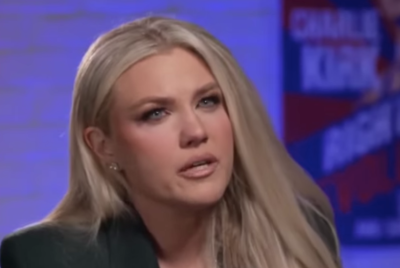Don't agonise if Republicans cut Obamacare – lots of healthcare spending is wasted anyway
Some healthcare spending is even harmful, argues Andrew Sabisky.

As the Trump administration forms and his inauguration approaches, the subject of healthcare is increasingly coming into focus. On the campaign trail, Trump repeatedly promised to repeal and replace the Affordable Care Act (Obamacare), though he was rather vague about what would replace it. On this issue, unlike many others, Trump was closely aligned with the mainstream Republican party, especially Paul Ryan, speaker of the House of Representatives.
Many fear, very likely rightly, that whatever healthcare framework replaces the ACA will lead to cuts in healthcare coverage, especially for poorer Americans. What are the likely healthcare consequences – on a population level – for cuts in coverage? What were the healthcare benefits to the ACA's introduction? The answer to the second question will provide a very substantial clue to the first.
The effects of increases and decreases in healthcare access are surprisingly hard to study. When increases and decreases happen, they tend to happen across a whole country mostly at the same time, which makes causal inference complicated. If an intervention is introduced that targets the whole population, who can be the control group?
Fortunately, every now and then, natural experiments do occur. One of the most notable happened in Oregon in 2008, where the state expanded its Medicaid programme, but only in a limited fashion.
Medicaid is a government-funded health insurance programme explicitly targeted at low-income individuals. In Oregon, the state government opened up this programme to new enrollees, but found themselves confronted with 90,000 people applying for only 30,000 available places. As a result, it was forced to hold a series of lotteries to determine the eventual recipients.
A moment's thought shows that such lotteries are essentially identical in all important respects to a large-scale randomised controlled trial. The results are accordingly important and should be heeded. The final sample sizes of the Oregon natural experiment consisted of over 20,000 individuals, split almost evenly between experimental and control groups (the lottery winners and the lottery losers).
The results dispel a number of important myths. The first is the myth that Medicaid programs are so terrible that they do not constitute any significant expansion in healthcare access versus being uninsured. The group of lottery winners saw a very significant uptick in their utilisation of healthcare resources. The experimental group saw a 35% increase in their medical spending, including increased prescription drug usage and office visits. This group were also very substantially more likely to use preventative healthcare measures, such as cholesterol screening and mammograms.
Despite this increased spending, the actual effects of health insurance on the recipients were low. After two years, hypertension, cholesterol levels, and glycated haemoglobin levels were all unchanged by comparison with the controls. Smoking and obesity rates were unaffected.
Depression levels were, however, substantially reduced by 30%. Though overall happiness levels seemed unaffected, there do appear to have been definite improvements in mental health among the insurance recipients. The null results for the physical health measures remained unchanged even when limiting the analysis to individuals aged between 50-64, and persons who had had a previous diagnosis of hypertension, diabetes, high cholesterol, or congestive heart failure.
Such an analysis obviously has limitations; the most notable is that all lottery entrants had to be able-bodied, so while their financial needs were very genuine (all participants were below the federal poverty line and had assets of less than $2,000), the study does not inform as to the causal effects of expanded or reduced healthcare on America's very substantial disabled population.
Nonetheless, it coheres quite well with the rest of the academic literature, including the famous Rand insurance experiment from the 1970s. The results of that lengthy longitudinal study were so strikingly null that economist Robin Hanson frequently cites it as evidence for his contention that medical spending could be cut in half and no one would be any worse off.
These results may seem bizarre, but are rather less so when one remembers that genetics, gender, age, smoking, and diet all have massively greater effects on mortality than healthcare access, even more so when taken together. Local rates of violence and accidents are also major drivers of neighbourhood variations in death rates. Secondly, a great deal of healthcare spending is useless and some is harmful. The major culprits include pointless screening programs, stupid surgeries, and, especially in America, wildly liberal pain treatment regimes that degenerate into opioid addiction.
The next few months will see a great deal of agonised commentary about reductions in healthcare access for the disadvantaged. The academic literature, however, suggests that perhaps we should all be a little more relaxed if people are less able to consume healthcare. It's very easy to see the cases where medicine truly cures; rather harder to spot are the cases where it kills.
Andrew Sabisky is an independent research worker and writer. Follow : @AndrewSabisky
© Copyright IBTimes 2025. All rights reserved.






















